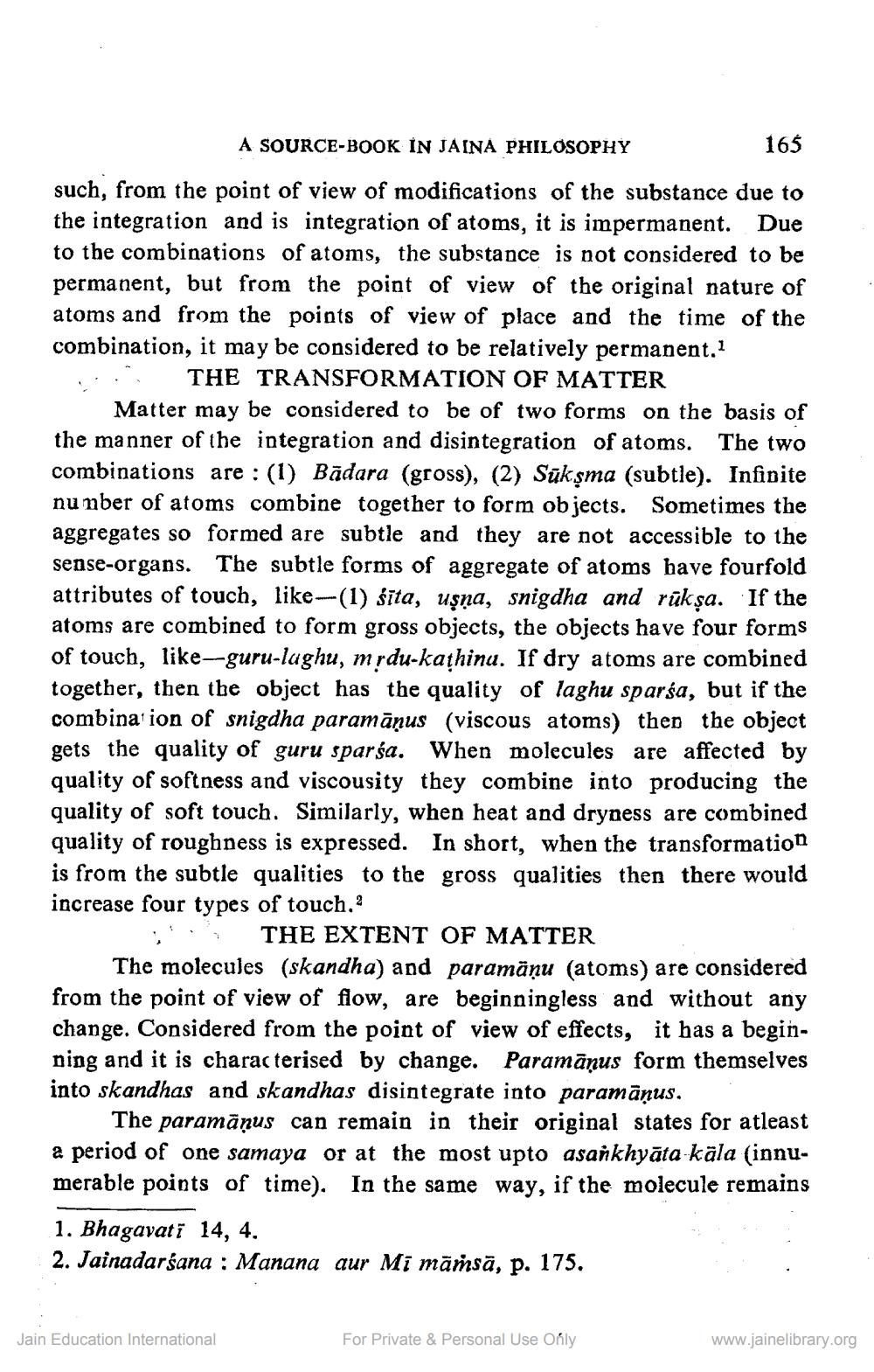________________
A SOURCE-BOOK IN JAINA PHILOSOPHY
165
such, from the point of view of modifications of the substance due to the integration and is integration of atoms, it is impermanent. Due to the combinations of atoms, the substance is not considered to be permanent, but from the point of view of the original nature of atoms and from the points of view of place and the time of the combination, it may be considered to be relatively permanent,1 ::.. THE TRANSFORMATION OF MATTER
Matter may be considered to be of two forms on the basis of the manner of the integration and disintegration of atoms. The two combinations are :(1) Bādara (gross), (2) Sūksma (subtle). Infinite number of atoms combine together to form objects. Sometimes the aggregates so formed are subtle and they are not accessible to the sense-organs. The subtle forms of aggregate of atoms have fourfold attributes of touch, like-(1) śīta, uşņa, snigdha and rūkşa. If the atoms are combined to form gross objects, the objects have four forms of touch, like--guru-lughu, mrdu-kathinu. If dry atoms are combined together, then the object has the quality of laghu sparsa, but if the combination of snigdha paramāņus (viscous atoms) then the object gets the quality of guru sparśa. When molecules are affected by quality of softness and viscousity they combine into producing the quality of soft touch. Similarly, when heat and dryness are combined quality of roughness is expressed. In short, when the transformation is from the subtle qualities to the gross qualities then there would increase four types of touch.
ii; THE EXTENT OF MATTER
The molecules (skandha) and paramāņu (atoms) are considered from the point of view of flow, are beginningless and without any change. Considered from the point of view of effects, it has a beginning and it is characterised by change. Paramānus form themselves into skandhas and skandhas disintegrate into paramānus.
The paramānus can remain in their original states for atleast a period of one samaya or at the most upto asankhyāta kāla (innumerable points of time). In the same way, if the molecule remains
1. Bhagavati 14, 4. 2. Jainadarśana : Manana aur Mi māṁsā, p. 175.
Jain Education International
For Private & Personal Use Only
www.jainelibrary.org




